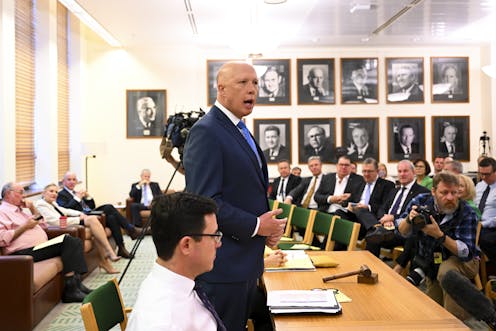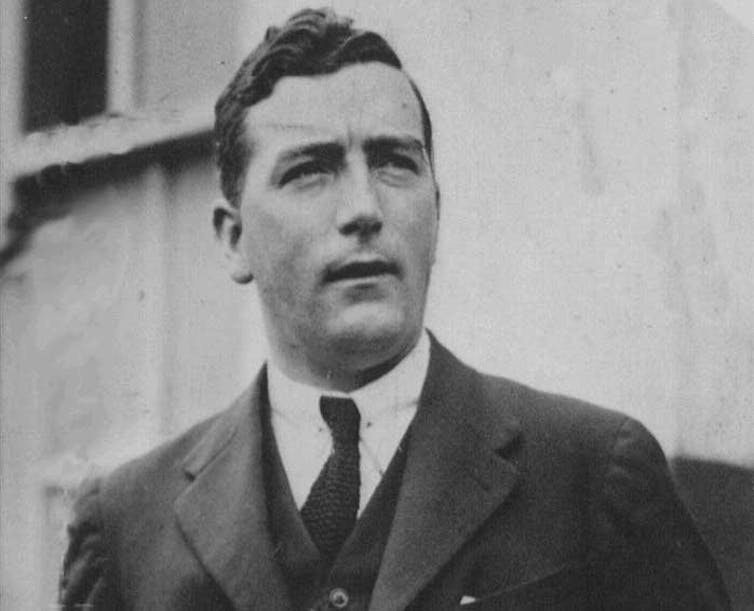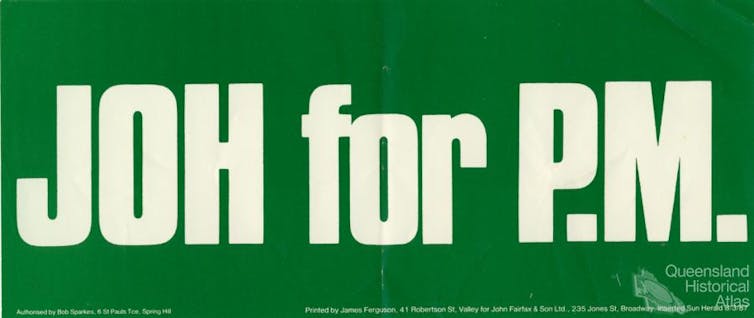
This week marks one hundred years of the federal coalition between the Liberal and National parties, the most successful governing partnership in Australian history.
The coalition proved to be enduring, holding power federally for about two-thirds of the last century. It has also been a feature of state politics, most importantly in New South Wales.
Most states have also had coalition governments at one time or another, despite the amalgamation of the Liberal and National parties in Queensland in 2008 ending the prospect of such an arrangement there for the foreseeable future.
Coalition governments held sway nationally for most of the 1920s and 1930s, all of the 1950s and 1960s, in the 1970s (except for the Whitlam Government between 1972 and 1975), and for about two-thirds of the period from 1996 to 2023. There have only been rare breaks since February 1923.
The relationship has had its ups and downs. Differences have occurred over personality, interests and ideology. The senior partner – whether called Nationalist, United Australia Party or Liberal – has often seen itself as the representative of the public or community rather than any class or interest.
In contrast, the Country Party – and today’s Nationals – has rarely been shy about advertising its sectional character as the voice of rural interests, even as it asserted the importance of the bush to the nation as a whole.
Read more: The Liberal Party is in a dire state across Australia right now. That should worry us all
Formation of the federal Coalition
In February 1923, Stanley Melbourne Bruce, leader of the Nationalist Party (the forerunner of the Liberal Party), reached an historic agreement with Earle Page, the leader of the Country Party (the antecedent of today’s National Party).
This agreement produced a solution to an indecisive election in 1922. After that contest, the Nationalist Party emerged as the largest party in the House of Representatives, but it lacked a clear majority.
The newly-formed Country Power held the balance and its leader, Page, refused to serve under Billy Hughes. Hughes had led the Nationalist Party since 1917, but he had formerly led the Labor Party and was distrusted by many on the non-Labor side of politics. It seemed to Page and his allies that Hughes had shed the Labor Party without shedding his socialism.
The solution gave birth to the coalition. Hughes stepped down. His Nationalist Treasurer, Bruce, became prime minister. And Page succeeded Bruce as treasurer in a coalition government with ministries divided between the two parties. The Country Party’s share was well out of proportion to its share of seats, for Page knew how to drive a bargain.

The Coalition solidifies, 1923-1941
Two developments helped to solidify the coalition between the Nationalist Party, which was stronger in cities and large towns, and the Country Party, which did best in rural and regional Australia.
One was the advent of preferential voting in 1918. While it had been considered by the parliament as early as 1902, the Nationalists introduced this system in a compromise with the Country Party, to smooth the path for Bruce to win a byelection in the semi-rural Victorian electorate of Flinders. Afterwards, preferential voting worked in the interests of the coalition parties by allowing them to preference each other’s candidates (and not waste votes) in so-called three-cornered contests against Labor.
The other change was widening the policy of protectionism to include farming interests. Australia’s manufacturing industry had developed behind a rising tariff wall. Tariffs rose again in the early 1920s, largely to protect industries and enterprises that had emerged during the war. The basic wage was part of an informal trade-off that held the system together. Farmers were largely outside of these arrangements and paid more for many of their inputs, including their labour. Not a few resented the imposition.
On coming to power in 1923, Page found that lowering tariffs was now politically impossible. So instead, he persuaded his party to “get into the vicious circle” with secondary industry and protect primary producers too. In government, he introduced policies such as establishing producer-controlled export boards, subsidising dairy and sugar exports, bounty schemes for growers, and advances to wheat farmers. The system came to be known as “protection all round” and would survive until the 1980s.
Read more: The 'forgettables': 5 Australian prime ministers you may not know much about
The Bruce-Page government fell in 1929, and, after the short-lived Scullin Labor government, a new party emerged to succeed the Nationalist Party called the United Australia Party (UAP), not to be confused with the modern party operating under that name.
Under the ex-Labor minister, Joseph Lyons, the UAP had a massive majority and governed as a single party from 1931 to 1934. But after 1934, the coalition was reassembled, with Page returning as deputy prime minister.
He worked well with Lyons but not with Lyons’ UAP colleague, the young and brilliant Robert Menzies. Menzies was from Victoria, where the Country Party governed in state politics with Labor support between 1935 and 1942. There was little love lost between UAP and Country Party people in that state. Menzies’s unfriendly attitude to some extent reflected these relationships.
When Lyons died in office in 1939, Page sought to repeat what he had done to Hughes in 1923. The plan did not work, partly because Page intemperately and unfairly attacked Menzies in parliament for not having served in the first world war. Menzies stood his ground, won the leadership of the UAP, and governed without a coalition. Page went to the backbench.

The Coalition after the war, 1950-1983
The coalition was put back together in 1940, but the wartime government (led first by Menzies and briefly by Country Party Leader Arthur Fadden) was marred by internal disagreements. These led to the fall of the coalition government in 1941 and the advent of Labor rule until 1949.
After the defeat of the Chifley Labor government, Menzies returned to power as leader of a much more successful coalition government. By this time, the Liberal Party had succeeded the old UAP. In the 1950s, Arthur Fadden worked co-operatively with Menzies as prime minister and, aided by the split in the Labor Party over the Communist issue, won a string of elections.
John McEwen succeeded Fadden as leader of the Country Party and deputy prime minister in 1958. McEwen did not inherit the Treasury but, expanding his portfolio to combine trade and industry, became the most powerful minister after Menzies. The tables had also turned on the issue of protection. McEwen supported it so strongly that the term “McEwenism” is still sometimes used to signify support for high tariffs.
Strong bonds in government, 1972-2022
With bonds having been tied tightly between coalition partners in opposition to the Whitlam Labor government (1972-75), the government of Malcolm Fraser (1975-83) was defined by mainly friendly relations between coalition partners. Fraser himself – a Victorian grazier – was very close to figures in the junior coalition partner such as Doug Anthony, Peter Nixon and Ian Sinclair. His economic policies largely continued the old system of “protection all round”.
During the Hawke era (1983-91), divisions in the coalition helped the Labor cause when the National Party (the new name for the Country Party) premier of Queensland, Joh Bjelke-Petersen, made an ill-conceived push for power at the national level. His ambitions destroyed both the federal coalition itself and John Howard’s chance of winning the 1987 election.

But after Howard came to power in partnership with Nationals leader Tim Fischer in 1996, the leaders crafted compromises over gun laws, native title and Telstra privatisation. They had a common interest, too, in heading off a challenge from further to the right from Pauline Hanson and One Nation.
By the early 21st century, agriculture’s contribution to the national economy had declined markedly from even the 1970s and 1980s, and the National Party was close to the mining industry. The rise of Barnaby Joyce signified the shift to strong support of coal in particular and mining in general. This relationship was closely associated with the Nationals’ continuing reluctance to embrace strong measures to address climate change.
Read more: Nationals vote holds steady. Will the Coalition become a party of the regions and outer suburbs?
2022 and beyond
While the Nationals retained their representation in the 2022 election, the Liberals suffered severe setbacks against Labor, the Greens and independent (teal) candidates. The future of the coalition remains uncertain, with the Liberals largely expelled from former strongholds in the cities.
But the National Party also faces many pressures, such as reconciling mining and agricultural interests in relation to land use, accommodating rising concern about climate change in rural and regional areas, and working out a feasible position on the First Nations Voice to Parliament.
Peter Dutton now leads a Coalition divided between a conservative majority and a moderate minority, a fissure that runs through both the Liberals and the Nationals. The resignation of one National Party member, Andrew Gee, over his party’s opposition to the Indigenous Voice to Parliament might be a foretaste of further fragmentation.
Since its inauguration in 1923, the Coalition has occasionally collapsed, but it has also usually resumed relatively quickly. It is possible, however, that the dramatic electoral realignments seen at the 2022 federal election have created more difficult, and continuing, problems of Coalition management for Dutton than those faced by previous leaders.
David Lee is a member of the Australian Labor Party.
Frank Bongiorno does not work for, consult, own shares in or receive funding from any company or organization that would benefit from this article, and has disclosed no relevant affiliations beyond their academic appointment.
This article was originally published on The Conversation. Read the original article.







